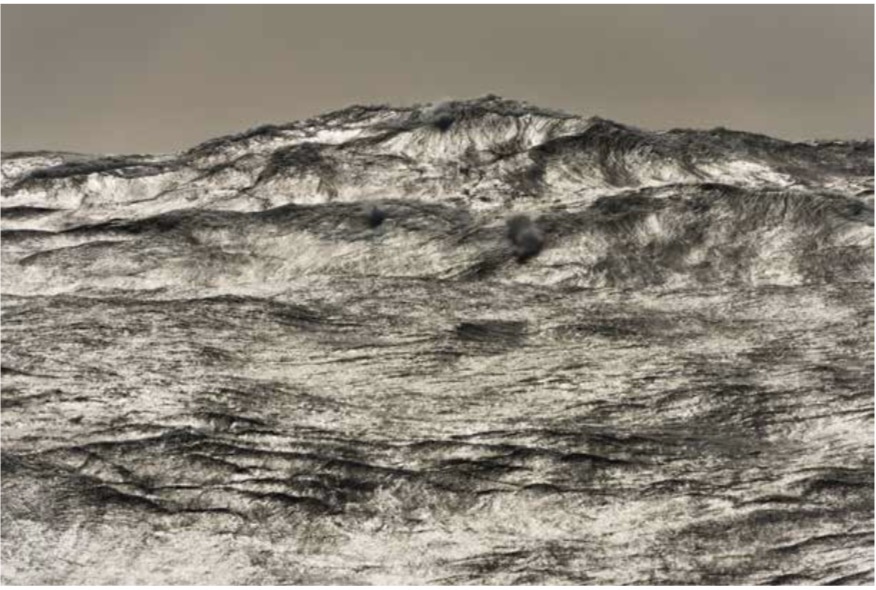
Océanique, is that what concerns the ocean / qui concerne l’océan.
Océanique brings together a selection of artworks that invite to pause and contemplate on the importance of water for the whole world. Oceans are the largest habitat on earth. All life forms and various complex ecologies are bond together by the water. Artists who are feeling the awareness of our fragile planet are reconsidering their role of art in responding
to current challenges. Artists such as Jocelyn Lee, Vincent Munier and Kim Boske are committed to address with art questions on the effects of changes to the earth’s climate. The complexity of the subject is reflected in the various perspectives the artists show. As the importance of the interplay in general of thousands of species of plants, faunal, bacteria, fungi and ecosystems for life on earth, is not easy to comprehend, the show aims for us to rely less on our cognitive abilities and rely more on our primary biological senses to explore the interconnectedness and the societal challenges that lay in front of us.
In the layered diversity of imagery in the work of Kim Boske she tries to reflect the biological diversity as this non-hierarchical, continuously changing complexity. For example the soil microorganisms at work in her indigo works are tightly coupled to their physicochemical environment. Microbial communities, including bacteria, archaea, fungi, and protists, are behind the functioning of water and soil.
The near abstract depictions of the Antarctic Ocean (also referred as The Southern Ocean of South Polar Ocean) of Vincent Munier obstruct deliberately the fact that these great ocean basins are home to the emperor penguins, wandering albatrosses, blue whales, fur seals and the 100 million birds who nest on its rocky shores. These forms of wildlife in Antarctica, from tiny krill to the massive whale, rely on microscopic algae (phytoplankton) and these microscopic plants rely on cold temperatures and nutrient and oxygen-rich waters. For Munier it is certain that he is committed to address with his near abstract works of the waters questions on the effects of changes to the earth’s climate. The complexity of this subject is reflected in the non-recognizable type of ocean.
Known for the identification of the surface of things, human or non-human, the work of Jocelyn Lee searches for boundaries or the absence of them. In her photograph of Newfoundland the surface of ice and water is fluid and in motion. Real boundaries are also in motion as many NGO's assert that sea ice extent should be the primary determiner of the Code boundary in the Arctic. "In order to provide sufficient environmental protection, the boundary should extend beyond the median sea ice exten and instead encompass the region’s maximum sea ice extent, or its ‘iceprone’ waters. (Source Polar Code boundaries for the Atlantic side of the Arctic).
For Greek artist Stelios Karamanolis the waters are part of his youth and identity. Greece is surrounded by waters and thus in mythological sense, the water deities were important. Amphitrite was the goddess of the seas, with Poseidon being her consort. Amalgamated into the surreal these are the subterranean entities that exist in the psyche of us all, just beneath the surface of the waking day.